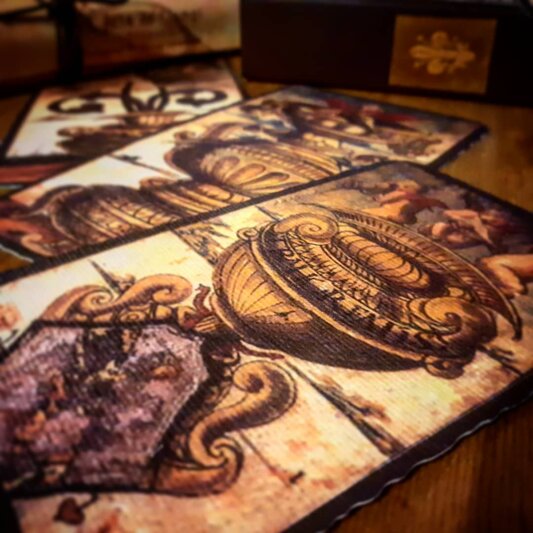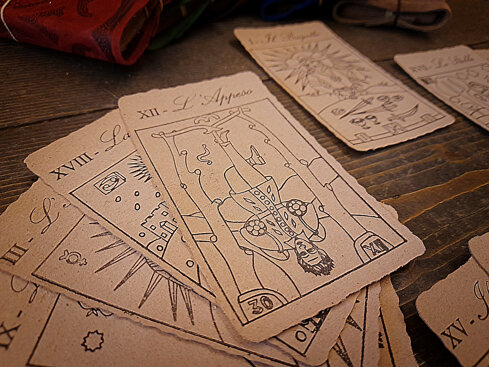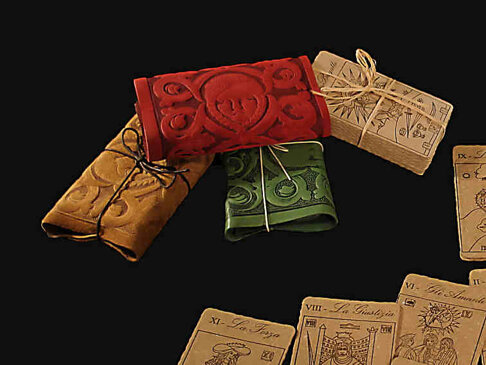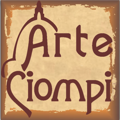Via de' Cerretani 18R, Firenze
Sito in aggiornamento
L'Arte de' Ciompi - L'Artigianato di Firenze
L'Arte de' Ciompi Artigianato di Firenze
HOME
E-SHOP
IDEE REGALO PER..
°
LABORATORIO
CHI SIAMO
CONTATTACI
°
L'ARTIGIANATO ITALIANO
COSA FARE A FIRENZE
COME LEGGERE I TAROCCHI
PINOCCHIO E FIRENZE
°
LAVORA CON NOI
SERVIZI E INFO
ANTICOVID
PAGAMENTI E SPEDIZIONI
CONDIZIONI DI VENDITA, RESI E PRIVACY
°
CERCA
SITEMAP
© 2020 L'Arte de' Ciompi di Susanna Capigatti - L' Arte de' Ciompi - Via de' Cerretani 18r - 50123 - Firenze - IT - p.iva 06925450485 - rea FI-666720
Tel: +39 339 8910460 - Mail: arteciompi@gmail.com - © L'Arte de' Ciompi 2020

HOW TO READ TAROT
The meaning of each card of the Major Arcana and Minor Aracana, and the instruction to read the Tarots

THE HISTORY OF TAROT
The Tarot was born in the Middle Ages in northern Italy, and spread throughout Europe with great speed. They were decks of 78 cards intended for playing in the courts, a refined and intellectual pastime. The wealthiest commissioned the painting of their cards to more or less famous painters; those who couldn't afford it instead bought decks of cards printed in series, created with wooden matrices and colored with mattes. “Divinatory” reading was not yet known, it would only become prevalent with the French school of the 18th century.
The origins of the Tarot are not certain. There are those who say that they derive from the hieroglyphs of the Book of Thoth and are a synthesis of Egyptian knowledge and religion. Others maintain that their birth is Chinese, due to the various similarities with the I Ching, the guardian book of ancient Chinese wisdom more than three thousand years old. Still others maintain that the origin is entirely Italian, placing them in the court of the Duke of Milan at the beginning of the fifteenth century. What is certain is that Tarot cards are very hermetic, with different symbols from tradition to tradition, and different methods of use and divination.

TAROT READING
How are Tarot cards read? Tarot cards are a wonderful form of reflection and contact with oneself, and a pleasant tool for asking the divine for advice. Let us advise you in the right way! It is a space and time dedicated to you, in which you can meditate and observe which path your life is taking, making you gain greater awareness that will give you the opportunity to make the best choices for your tomorrow.
The Art of Tarot Reading allows you to face your difficulties by bringing new light to your life. In a consultation you read the secret codes of the Tarot, you will understand what is really hidden behind your question and what change your life is asking of you.

THE TAROT OF MARSEILLES

THE SOLA BUSCA TAROTS

ARE YOU LOOKING FOR AN ADVICE?
Federico Jeantet is our trusted Tarology and Numerology Consultant , the right person to turn to if you are looking for a moment of reflection, looking for advice, and want to find a point of contact with yourself.
READ TAROT IN FLORENCE
It is not easy to find reading consultants who are honest and knowledgeable. We need thoughtful, sensitive, passionate and kind people. In Florence you can find Federico Jeantet, consultant in Tarology and Numerology, who offers splendid individual consultations as a way to a better understanding of oneself.
ASK FOR A CONSULTATION
Tarot cards support us in our evolution and personal growth, therefore it is recommended to request a reading whenever you want to clarify an aspect of ourselves or a situation that we have difficulty managing or facing with serenity.
When we decide to receive a Tarot reading we must be aware that it is not a game, but rather a means of personal growth that exploits our needs, or desires, to show us new points of view that will help us find a new well-being. You should not expect the Tarot to predict a hypothetical future or tell you what needs to be done, precise indications will be given on how to welcome a change within yourself and the various opportunities that may arise from this change will be shown.
L' Arte de' Ciompi - Firenze
HOME
E-SHOP
GIFT FOR..
°
WORKSHOP
ABOUT US
CONTACT US
°
ITALIAN CRAFTS
WHAT TO DO IN FLORENCE
HOW TO READ TAROTS
°
ANTICOVID SERVICES & INFOS
HOW TO PAY ON-LINE
DELIVERY TIME
GENERAL, SALES AND RETURN CONDITIONS
SITEMAP
°
SEARCH
© 2020 L'Arte de' Ciompi di Susanna Capigatti - L' Arte de' Ciompi - Via de' Cerretani 18r - 50123 - Firenze - IT - p.iva 06925450485 - rea FI-666720
Tel: +39 339 8910460 - Mail: arteciompi@gmail.com - © L'Arte de' Ciompi 2020

